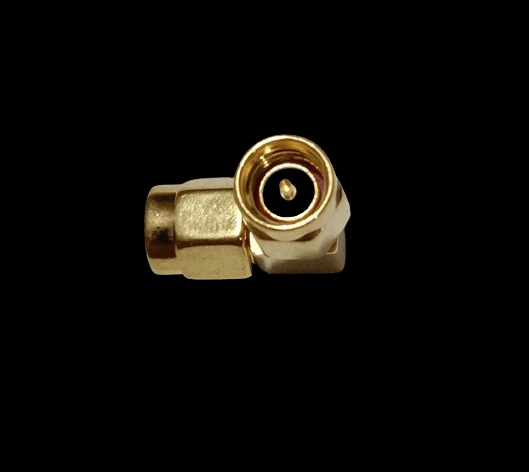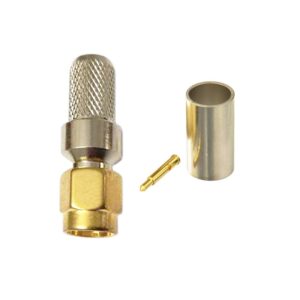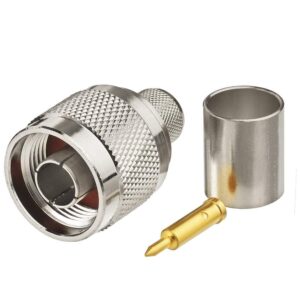- Frequency Range:
- Up to 4 GHz: Designed to operate effectively up to 4 GHz. For applications requiring higher frequency performance, ensure that the adapter meets those requirements.
- Impedance:
- 50 Ohms: The standard impedance for RF applications, ensuring proper signal matching and minimal signal reflection.
- Connector Types:
- SMA Male: Features a center pin and threaded coupling mechanism on both ends of the adapter. The connectors are oriented at a 90-degree angle relative to each other.
- Insertion Loss:
- Typically ≤ 0.3 dB: Indicates the signal loss as it passes through the adapter. Lower insertion loss values are preferable for maintaining signal strength.
- Return Loss:
- Typically ≥ 15 dB: Reflects how well the adapter maintains impedance matching. Higher values indicate less signal reflection and better performance.
- VSWR (Voltage Standing Wave Ratio):
- Typically ≤ 1.5: Represents how well the adapter maintains impedance and minimizes signal reflections. Lower VSWR values indicate better performance.
- Construction Material:
- Body: Often made from high-quality materials such as brass or stainless steel for durability and reliability.
- Plating: Usually gold or nickel-plated to ensure good conductivity and resistance to corrosion.
- Temperature Range:
- Typically -55°C to +165°C: Ensures reliable operation across a range of environmental conditions.
- Size and Weight:
- Compact Design: Designed to be compact and lightweight, making it suitable for tight spaces and minimizing additional strain on connectors.
Example Part Number:
- Manufacturer: Check with RF component suppliers such as Amphenol, Pasternack, or similar companies for specific parts.
- Part Number Example: You might find parts like Pasternack PE4453 or similar. Verify the exact part number and specifications with the supplier.
Applications:
- RF and Microwave Systems: Ideal for connecting SMA male connectors where a right-angle configuration is needed.
- Communication Equipment: Useful in scenarios where routing constraints necessitate a 90-degree connection.
- Test and Measurement: Commonly used in RF testing setups to manage cable routing and avoid connector interference.
Visual Inspection:
- Connector Compatibility: Ensure that both SMA male connectors are correctly oriented at a 90-degree angle and are compatible with the devices being connected.
When selecting an SMA Male to SMA Male Right-Angle adapter, confirm that it meets your frequency, impedance, and performance requirements. Always refer to datasheets and specifications provided by the manufacturer to ensure compatibility and optimal performance for your specific application.




